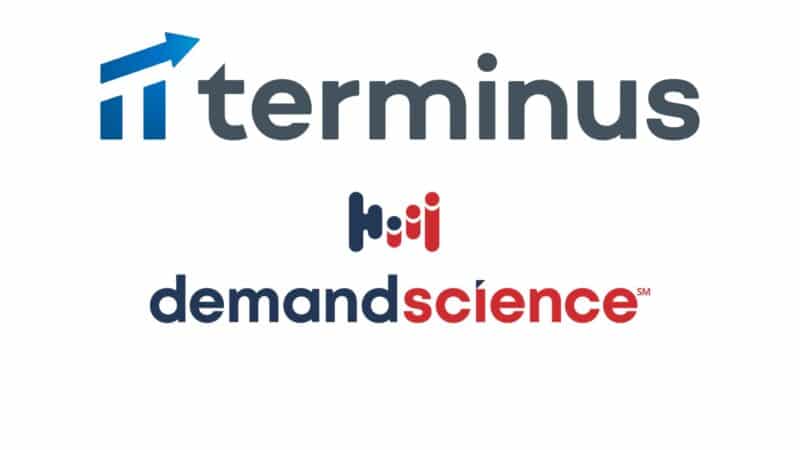
Reaching your B2B audience gets challenging each year as competition increases and digital trends evolve. New technologies and changing buyer behaviors demand that marketers stay adaptable and innovative. For small teams, account-based marketing (ABM) simplifies targeting and maximizes budget impact.
The benefits of programmatic ABM for small B2B marketing teams
ABM presents multiple benefits for small B2B marketing teams striving to optimize resources and drive engagement.
- Targeted campaigns: Focusing on specific accounts ensures marketing efforts resonate with each client’s unique needs.
- Personalized engagement: Using tailored messaging addresses specific challenges, increasing the likelihood of conversion.
- Sales and marketing alignment: ABM fosters stronger collaboration between sales and marketing teams, aligning them toward common goals.
- Efficient use of resources: By prioritizing quality over quantity, ABM reduces wasted marketing spend and drives a greater return on investment.
- Real-time optimization: Leveraging technology and data analytics, ABM enables real-time tracking and optimization of campaigns, boosting effectiveness in a competitive landscape.
What type of ABM targeting strategy is best for a small marketing team?
Marketing teams can choose from various ABM strategies, so it’s important to pick the one that best fits your business goals:
1:1 ABM strategy
- The 1:1 approach focuses on individual accounts, delivering highly personalized marketing messages and experiences tailored to a single target company. It often requires significant resources for effective execution.
- Because maintaining a 1:1 strategy requires more resources, marketing teams typically target only one to five high-value accounts at a time with extremely personalized messaging.
1:few ABM strategy
- The 1:few strategy targets a small group of similar accounts, offering some personalization while still benefiting from addressing multiple accounts together.
- Because the same personalized messaging can be used across several dozen accounts, a 1:few strategy requires fewer resources in the long term.
1:many ABM strategy
- The 1:many strategy automates the targeting process across a broader set of accounts (100s or even 1,000s of accounts), leveraging data and technology to deliver customized advertisements to numerous decision-makers in real time.
The 1:few ABM strategy is ideal for small marketing teams due to its balanced approach between personalization and efficiency. By targeting a small group of similar accounts, teams can create tailored messages that resonate with multiple clients without the heavy resource demands of a 1:1 strategy. This approach helps small teams run effective, scalable campaigns without overwhelming their resources.
How to identify target accounts for ABM
Identifying the right accounts is crucial for ABM’s success. It ensures your marketing efforts are focused on high-value targets that align with your business objectives. Here’s how to effectively identify and select these key accounts.
Understand your total addressable market and ICP
Before launching your ABM campaign, you must understand your total addressable market (TAM) and establish a clear ideal customer profile (ICP). An ICP acts as the company counterpart to an individual buyer persona, outlining the characteristics that define the organization most suited for your products or services. This includes factors like industry, company size and location. Develop your ICP by combining insights from your sales team with data about your current customers from your CRM.
Dig deeper: How to find your next, best customers with ABM
Collaborate with sales teams
Work closely with your sales team to identify segments or specific accounts showing interest in your products or services. Regular discussions with sales reps provide valuable insights into customer preferences, behaviors, and challenges. They also reveal shifts in market demand and highlight key topics in conversations with target accounts.
These insights help refine your target list, allowing you to focus on prospects with a higher chance of converting. Sharing this information helps you create a more effective strategy and messaging that aligns with potential customers’ needs, driving better results. Ensure your sales and marketing teams communicate regularly and collaborate for a successful ABM strategy.
Analyze existing customers and data
Analyzing your current customer base reveals common traits among high-value clients, such as industry, company size and pain points. Identifying patterns in buying behavior and demographics lets you tailor marketing campaigns effectively.
Data analytics tools like Google Analytics and CRM systems provide valuable insights into potential accounts and customer relationships. It enables you to create personalized strategies that enhance lead conversion and foster customer loyalty.
By analyzing the data and collaborating with the sales team, you can identify distinct categories of target accounts to pursue and the specific accounts within those categories that will be included in your 1:few ABM campaign.
Developing resources for your 1:few ABM campaign
As a small team, you might lack the resources for a large-scale campaign. However, using customized ads, optimized landing pages and a targeted email strategy lets you create an effective 1:few ABM campaign to engage your audience and prepare them for your sales team.
Customized ads to engage your audience
Creating custom ads for your ABM campaign involves leveraging the insights gathered from your sales team and previous data analyses to craft messaging that addresses each target segment’s specific pain points and interests. Incorporating industry-specific language, relevant case studies and personalized calls to action (CTAs) significantly enhances engagement. Also, testing different ad formats and placements will help you identify what works best for your target audiences, maximizing the effectiveness of your campaign while driving higher conversion rates.
When deciding where to run ads for your ABM campaign, consider where your audience spends the most time and align this with your budget. If resources allow, a multi-channel strategy is highly effective for B2B ABM, incorporating LinkedIn Ads, Google Ads and display ads through platforms such as Demandbase, Rollworks or Terminus. However, if adding another marketing technology solution isn’t feasible within your current budget, focus on prioritizing account and contact targeting on LinkedIn and using customer match targeting in Google Ads.
Dig deeper: Maximizing your B2B spend: Is account-based marketing worth it?
Dedicated landing pages serve as the focal point of your campaign
A dedicated landing page is essential for the success of your 1:few ABM campaign, as it serves as the focal point for engaging your target accounts. When designing this page, ensure that it aligns closely with the personalized ads that brought users there, maintaining consistent messaging and visuals for a seamless user experience.
Begin by highlighting the specific pain points and solutions relevant to that particular audience segment, using tailored language that speaks directly to their needs. Incorporate trust signals, such as testimonials, case studies or industry certifications, to reinforce credibility.
Make the call to action prominent and aligned with the user’s journey, guiding them toward the next step in your sales process. By crafting a landing page that resonates with your account targets, you significantly enhance engagement and improve conversion rates, ultimately contributing to the overall success of your campaign.
Engage target contacts with automated email nurturing
An effective automated email nurturing campaign is crucial for maintaining engagement with targeted contacts throughout the ABM campaign. Craft customized messages that address each segment’s unique challenges and objectives, showcasing valuable insights, relevant case studies and exclusive resources that speak directly to their needs and are relevant and timely. The messaging in your emails should reflect the same messaging used across the ads and dedicated landing pages you have created.
With a series of well-timed emails, you gradually educate and inform contacts at your target accounts, fostering trust and rapport over time. To effectively guide contacts through the marketing funnel with your email nurturing strategy, ensure your messaging centers around a single, clear CTA. Avoid overwhelming recipients with excessive information at once.
- Initially, focus the first few emails on top-of-funnel content that showcases your company’s industry expertise rather than promoting your product. Examples include key blog posts, industry reports or guides that help contacts better understand their pain points.
- Next, follow up with a couple of emails that include middle-of-funnel content resonating with your target segments, such as webinar invitations, case studies or guides that clarify the solutions available to address their challenges.
- Finally, the last emails in your automated nurturing sequence should contain a clear CTA, encouraging recipients to schedule a consultation or engage with the sales team when they feel ready.
Developing a customized email nurturing strategy engages your targeted accounts and sets the stage for fruitful conversations with your sales representatives. If you already have a list of contacts from these accounts who have opted in to receive information, enroll them in this automated nurturing process at the beginning of your campaign. As more contacts opt-in through your targeted advertising efforts, you can easily add them to the nurturing sequence.
How to measure the success of your ABM strategy
To measure the success of a 1:few ABM campaign, it’s essential to track key performance indicators (KPIs) tailored to the specific goals of your campaign. Follow these tactics to determine the success of your ABM campaign:
Engagement rates
Start by assessing engagement metrics, such as email open and click-through rates, to evaluate how effectively your content resonates with individual accounts.
Conversion rates
Monitor conversion rates from your calls-to-action and dedicated landing page to determine how many contacts progress through the marketing funnel and eventually engage with your sales team.
Account-specific metrics
Tracking the growth of account-specific metrics, such as pipeline value and sales opportunities generated from targeted accounts, will provide insight into the direct impact of your ABM effort.
Collect feedback
Collect qualitative feedback through surveys or conversations with sales representatives. This provides valuable insights into the perceived value of your communications and the overall effectiveness of your approach.
Launch your ABM journey
If your team is new to ABM, adopting a 1:few ABM strategy is likely the most effective approach, especially for smaller marketing teams. This strategy excels in personalizing outreach while maximizing limited resources.
By focusing on a select group of high-value accounts, teams can craft tailored content and communications that resonate more deeply, enhancing engagement and building stronger relationships. Ultimately, embracing a 1:few ABM strategy empowers your smaller team to compete effectively, drive meaningful results and achieve sustainable growth in a competitive landscape.
The post The small B2B marketing team’s guide to ABM appeared first on MarTech.







